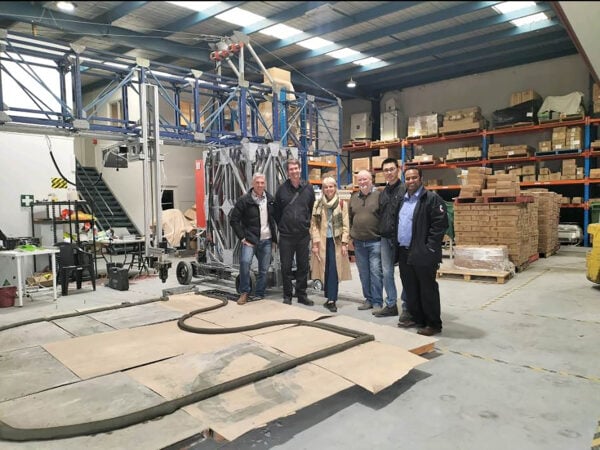TECHNOLOGY INNOVATION: HH visits 3D printing companies in Melbourne
HH visits Melbourne 3-D printing factories
As the climate gets hotter and the price of construction and demand for more housing continues to grow, it is important to find new ways to provide affordable and high quality housing.
Healthabit’s David and Bobbie are joined by SA Housing Representatives at a 3D printing factory in Melbourne
In October HH accompanied South Australia (SA) Aboriginal Remote Housing managers to visit 3D printing companies in Melbourne to understand the viability of the technology as an option for Aboriginal housing.
Thoughts on the technology
3-D technology promises to dramatically decrease construction time and improve thermal performance of housing. From Healthabitat’s first hand experience, some thoughts, questions and concerns about the technology that come to mind are:
- The logistics of supplying the raw materials and technology to remote sites could see cost outweigh the benefit eg. Highly mineralised water could be a concern and may not be able to used in the mortar/concrete mix
- Construction details of integrating services to allow cross-trade/ cross-technology efficiencies and stream lined construction need to be resolved ie. how does plumbing get integrated into floor, wall and roof construction whilst printing is occuring?
- Construction details to allow easy future access of hardware and services to allow for ongoing maintenance need to be resolved ie. how would a plumber change a shower breach?
- The ‘coil pot’ style finish to the walls would be very hard to clean allow harbor points for cooking fats, dirt, cockroaches, spider webs, and vermin
- The technology and mix is seemingly sensitive to the rain and heat, where hot days above 30 C could prove difficult and require pouring to stop during the hot parts of the day. This would force construction to happen at certain times of the year, if weather patterns remain predictable
- Due to the technology not being constrained by labour carried out by people, pouring could be occurring 24 hours/day. This could dramatically decrease construction timeframes
- Thermal bridging at door and window openings are a concern, especially in cold desert winter nights
- Due to potentially minimising on site trades, how can the technology achieve and improve target Indigenous employment commitments?
HH looks forward to following Australian based trials in urban and remote settings to see this technology advance and hopefully broaden to ‘open source’ to allow other raw materials like dirt to be used.










